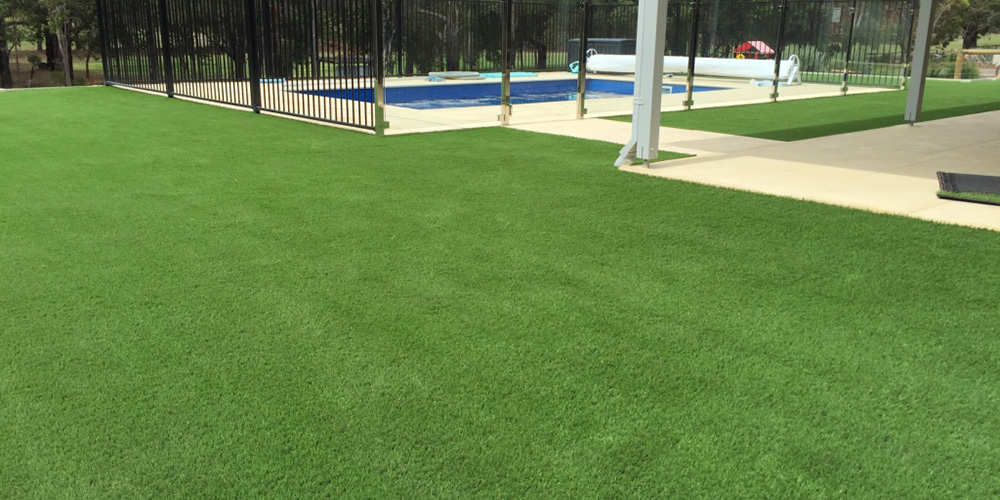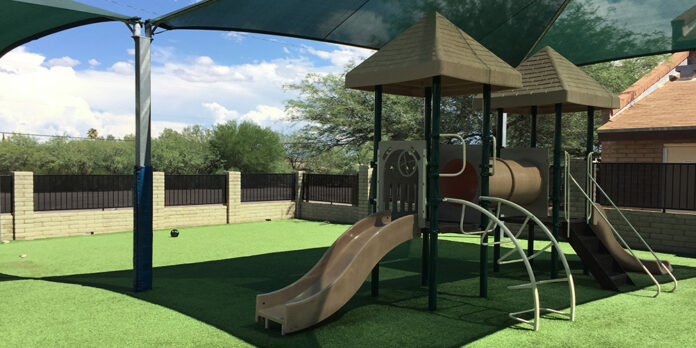Knowing how artificial grass reacts to even minor weather changes is helpful on those infrequent rainy days, unexpected cold snaps, and sweltering summer afternoons. Let’s look at how the weather can impact synthetic grass and if there’s anything you can do to maintain your synthetic turf looking as good as the day you had it installed.
The Effect of Heat on Synthetic Grass
Synthetic turf does get hotter than natural grass, but most people who like artificial turf don’t remark they can’t use their lawns in the summer because of the heat. It is crucial to know how to maintain a safe and comfortable environment on your artificial turf, especially for children and pets, during periods of extreme heat.
The choice of materials and what goes underneath your fake grass is vital if you want to keep things cooler during the hot summer months, especially if you have not yet built your lawn. Heat-resistant synthetic grass is a good option with its lighter blades and infills.
Since rubber infills soak up more heat than their synthetic counterparts, they shouldn’t be used. Infills that cool when wet can be used after installation to further reduce the surface temperature of your synthetic turf. To stop the spread of germs on your turf, apply a heat-resistant antimicrobial treatment.
Think about where you want to put your artificial grass and whether or not you can strategically place it so trees will provide shade. One of the significant advantages of artificial grass over real lawns is that it doesn’t require as much sunshine.
Shade structures, such as sunshades, can make artificial turf areas cooler during the middle of the day and provide visual interest to your outdoor space if you don’t have any natural trees or shrubs nearby. Shade can be provided to your lawn in varying degrees using retractable awnings, sun sails, and portable canopies.

What Happens to Synthetic Grass When It Gets Cold?
Cold weather does not hurt artificial grass. Even if you get a little frost, it will melt and drain away if your lawn has good drainage.
People who live in places where snow falls yearly should know a few extra things about how to take care of artificial turf in the winter.
Use plastic shovels instead of metal ones to protect the synthetic turf fibers, and don’t use salt or other substances that melt snow on an artificial lawn. You should avoid using these things when taking care of your grass because they can break down the blades over time and even mess up drainage systems.
After the snow is gone, your turf may need to be cleaned up. A soft-bristled broom or a turf rake made for artificial grass should be able to return the blades to their original shape.
Final Thoughts
Artificial grass doesn’t need to be watered every day as natural grass does. But areas that get a lot of use, whether from pets, kids, or just time, can be kept clean by hosing them down. This is because turf can get dusty or dirty when used a lot.
Good drainage will be installed as part of the process to guarantee that any water that touches the grass surface does not pool and cause future issues like mold growth. However, if there is water collecting, you may want to use a cleaning product that inhibits the growth of mold.











